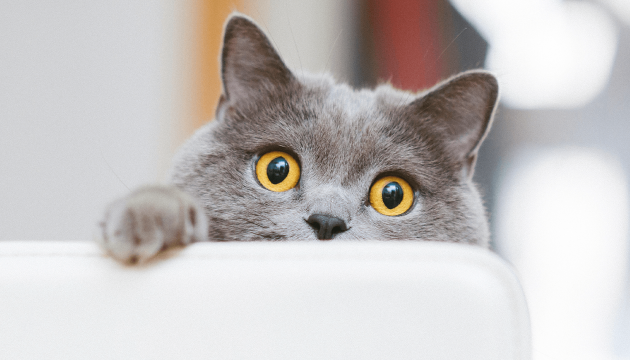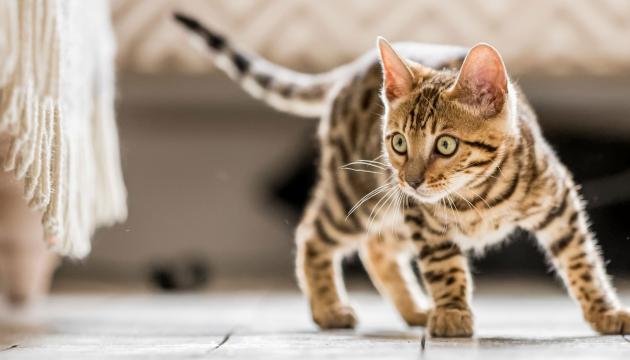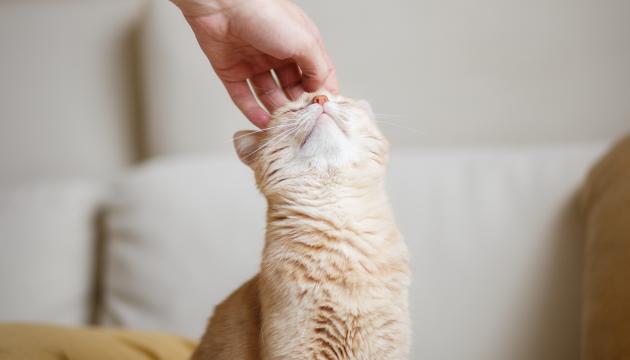

Cat’s body language and communication
Cats are traditionally seen as independent, even antisocial pets. A cat's body language can be difficult to interpret, especially for a new cat owner, since it is much more subtle than the body language of dogs.
It has been thought that the cat would be rather attached to a place than its owner. This belief is probably because cats are very territorial animals. However, research has shown that cats have a wide range of emotions, both negative and positive. For example, a cat can feel fear, anger, and sadness, as well as curiosity, joy, and affection.
Read this article to find out what all a cat's body language can mean.
A cat’s body language – Signs of affection
A cat's affection for its owner shows in many ways. Showing affection requires trust, and building trust depends on the cat's experiences as a kitten. If a cat has had positive experiences with people since it was a kitten, it can easily build trust. The time spent with the cat and the attention given to the cat will contribute to the formation of a strong bond between the cat and its owner.
A cat can show affection, for example, by:
- purring
- exposing its belly
- bringing prey
- headbutting
- kneading.

Cats show their affection for their owners especially when they want something from them. A hungry cat asking for food often meows loudly, purrs, and pushes its head against the owner. With this, the cat seeks attention and at the same time shows its trust.
The cat often responds to petting by head bumping and kneading with its paws. The cat’s cheeks have glands that secrete pheromones, so head bumping is also for leaving scent marks. If the cat exposes its belly and allows you to touch it is also a sign of trust.
Why does a cat knead (or bake) with its paws? It is said that kneading is a memory from kittenhood. A suckling kitten stomps its paws on the mother cat’s teat area, so the milk is secreted better. When kneading, the cat feels good and safe.
A cat is not as easy to train as a dog, but training a cat is entirely possible. Read PrimaCat's tips for training a cat.
Calming signals in cats
Like dogs, the cat's body language also includes calming signals, which are intended to soothe either another animal or a person and avoid conflicts. Calming signals can also be used to communicate with your cat, and they can be a good help with a timid cat.
Calming gestures of a cat include, for example:
- Squinting of the eyes
- Slow and calm movements
- Yawning
- Slowly opening and closing its eyes.
Staring is usually a threatening signal in the cat world, but slowly opening and closing the eyes is a calming signal. When a cat looks at you and squints or blinks slowly, the cat starts to feel calm and confident.

Threatening signals in a cat's body language
Threatening signals are usually easier to recognise than trusting and calming signals.
A cat that feels threatened may, for example:
- puff up its fur
- tense its body
- hiss
- bare its teeth
- flatten its ears against its head.
A cat that feels threatened or scared and needs to defend itself often bends its body in an arc towards the threat, flattens its ears along with its head, and has dilated pupils. The cat may hiss and spit. Its fur can be fluffy, and tail puffed up.

The attacking cat's pupils have narrowed. Its posture is low, and it wags its tail low back and forth, growling and hissing. The fur of an attacking cat is usually not fluffy but pressed against the body. Both defensive and attacking cats show their teeth.
When the threatening situation has passed, a cat may relax itself by, for example, stretching or grooming itself.
Begging cat
A cat's body language also includes begging, and cats can beg for food just like dogs do. When cats beg they usually seek intense eye contact. The cat may purr and stomp around. The cat's eyes are dilated and alert, and it stares at its owner and a desired object, such as a treat.
Short meows and purrs are typical sounds what the cat makes when begging. Sometimes a begging cat will stand up against the owner's leg to get the human's attention.

Why do cats purr?
A cat purring can mean many things. Usually, the cat purrs to show that it is happy and feels safe. It is claimed that a cat can change the frequency of its purr to match the cry of a human child, which appeals to a human's nurturing instinct. This often seems to work, especially when combined with a gentle nudge of the leg, making it more likely for the cat to get some treats.
Do you want to learn more about cat behaviour? Read our article on a cat's eating behaviour and natural diet.
However, a cat's purring can also indicate distress, such as illness, injury, or impending death. The exact reason for this is unknown, but it is suspected that by purring, the cat communicates to other cats that it is harmless or tricks potential predators into thinking everything is fine. The cat can also soothe itself by purring. This is why cats can often purr in stressful situations such as at the vet clinic or when travelling in a vehicle.
All cats are individuals, and some cats show their emotions more than others. The differences between cat breeds and individuals can be surprisingly large.



